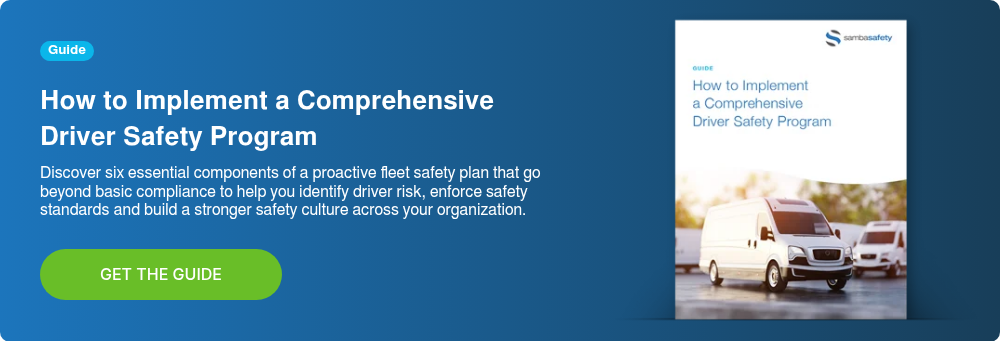
Proactive driver risk management coupled with strong employee engagement is a powerful mix.
While employee engagement is most often seen as a way to help secure revenue goals, get projects successfully across the finish line and support other important methods of company growth, it’s also a highly effective tool in successful driver risk management.
To establish a positive, proactive safety culture, you need to have 100% buy-in from your drivers as they’re the ones behind the wheel. Here are some of the many benefits of employee engagement when it comes to mitigating risk across your driver population.
5 Benefits of Employee Engagement for Driver Risk Management
1. Saves Time and Money
With a team of engaged, safety-minded employees, risks are reduced and repetitive issues can be identified and eliminated. Companies spend less time and money on remediating bad driving behavior and disqualifying drivers – avoiding expensive violations, crashes and claims and better retaining talent.
Further, as a company’s risk profile improves, long-term savings can be found in things such as commercial auto insurance premiums. Auto premiums have seen price increases for 29 consecutive quarters and are negatively affecting companies’ bottom line across all industries.
Download Now | Free Checklist: 6 Steps to Implement a Comprehensive Safety Program
2. Helps Prevent Reputational Damage
Drivers’ actions can, and do, impact a company’s reputation. If something bad happens, customers, the public will view your brand in a negative light, damaging the company both in the short and long term.
With a culture of employees engaged in driver risk management and aware of what the consequences of the risk could be, there is a broader assessment of the risk, clearer decision-making on the actions, and better planning for mitigating the risk.
This helps eliminate the all too common scramble to address the situation and fallout when things go wrong.
3. Reduces the Impact of the Unexpected
Companies don’t like surprises or unplanned events impacting their actions, projects and plans. With a company-wide attitude toward risk management, the impact of the unforeseen can be minimized.
This is accomplished by reducing the number of unforeseen events, but also by alerting to their happening. With an engaged workforce, the attitudes of “someone else will spot it” or “it’s not my place to say” will be removed, and employees will feel more apt to speak up and flag someone down when something is wrong or heading that way.
4. Improves Internal Communication
Communication is often one of the top five major issues in a company – no matter the size or structure. By having an engaged workforce with a strong focus on risk management, another channel and reason for communication is opened. This allows for more discussion and dialogue both horizontally and vertically and the breaking of the silo mentality.
The benefits of this will flow into other areas of discussion within the company, as internal networking is established and fed by risk management dialogue.
5. Makes Safety a Top Priority
The risk that company drivers face while behind the wheel grows year after year. According to the National Highway Traffic Safety Administration, traffic deaths for the first quarter of 2022 were the highest since 2002. An estimated 9,560 people died from motor vehicle crashes during this time, up 7% from the same time in 2021.
With this in mind, safety needs to be a top priority across your entire driver population. Companies must be proactive in ensuring that they maintain a fleet of confident, defensive drivers that are aware of the risks that surround them on the road and how to handle them appropriately when facing them.
With strong employee engagement, companies can establish a company-wide mindset where drivers understand how the decisions they make can and will affect the well-being of themselves, their career, their coworkers, their employer and the communities they serve.
Maintain a Fleet of Engaged, Safety-Minded Drivers
To discover what gaps your company may need to fill in order to establish a stronger driver risk management strategy, download our checklist below.




